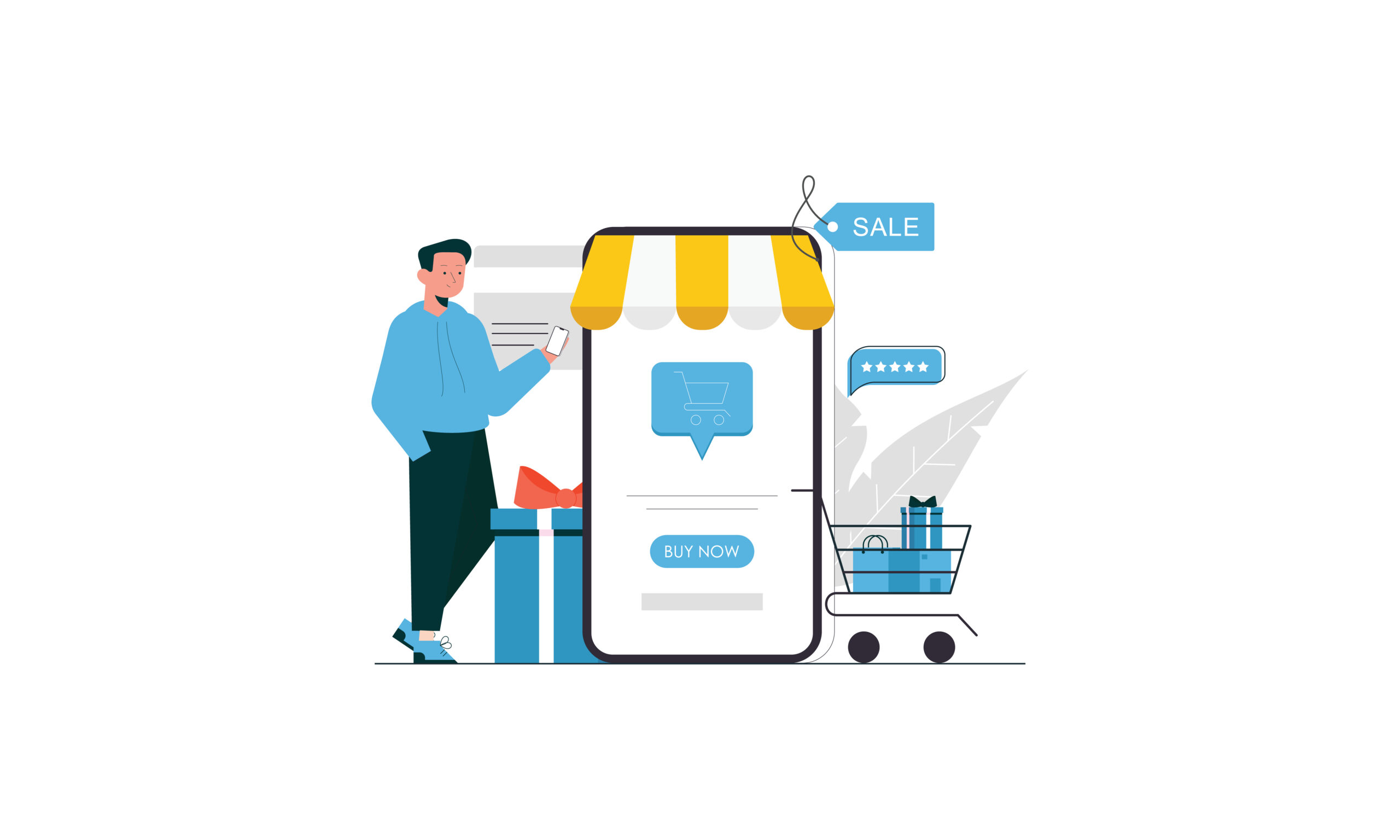Ecommerce sales in 2021 reached $5 trillion and this number is expected to be even higher at the end of this year (2022).
It’s not a bad statistic for those wanting to start an ecommerce business.
Starting an ecommerce business is no easy feat, but it can be done. There are millions of successful ecommerce websites online, there’s no reason you can’t be next.
But first, there’s a lot to consider when starting an ecommerce business.
Coming up with an idea, deciding on a business model, understanding costs, and eventually getting customers are just the beginning.
65% of consumers expect to use online shopping channels more.
For any entrepreneur starting your own business, you’ve most likely had the dream of running your own ecommerce store. Learn the exact steps to that dream in the guide
We’ve thought of everything from tips, steps and need-to-know information to get started in building your own ecommerce business.
Find a product to sell
The first step and arguably the most important one when building an ecommerce business is deciding on what products to sell directly to consumers.
Finding products to sell can be difficult but we’ll give you our best tips for finding a profitable product.
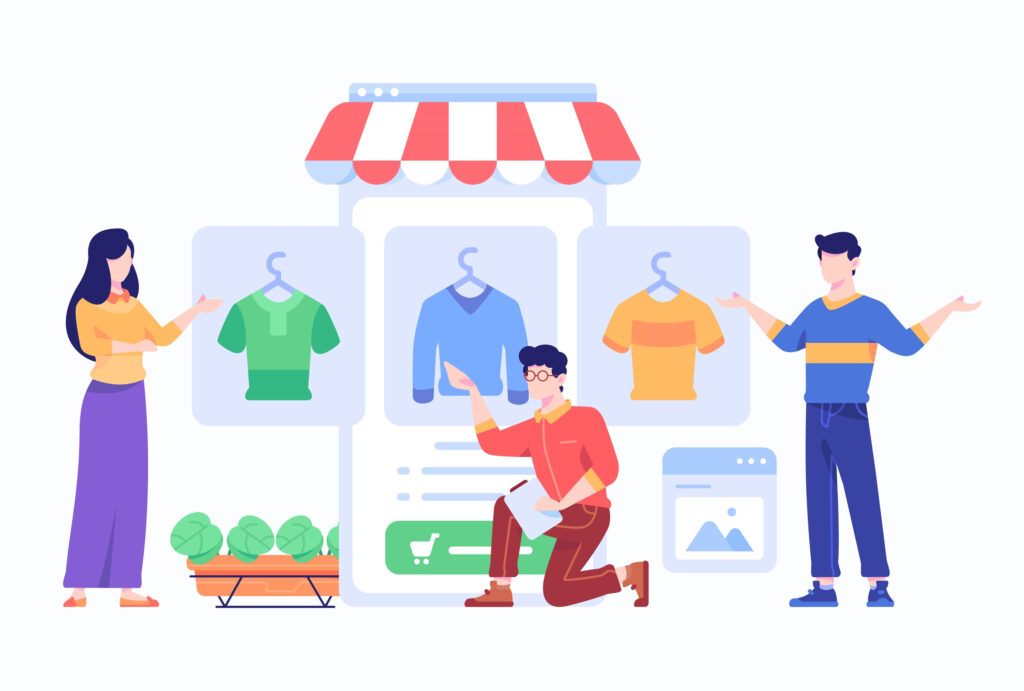
Solve a customer's pain
Solving customer pain points is an easy way to come up with a product, the difficult part is finding the right pain. A good example of a pain is Brita Filters.
The pain would be not having accessible filtered drinking water. Their solution was to create an affordable easy-to-use water filter jug.
Another good example is automatic coffee makers. The pain would be not spending the time or energy to make coffee. Delonghi Coffee for instance has created an automatic coffee maker that does the work for you.
Pains don’t have to be complicated. The simplest customer pain can be a big success for consumers.
Passion for a product
Using your passion can be a red flag for some when finding the right product to sell, but we like to say otherwise. Having a product your passion about means you care.
You’re going to spend all your time ensuring it’s a success because you care about it. It also means you’ll have a wealth of knowledge on the topic.
A good example of passion products is Sour Strips. The owner, Max Chewning, had a love for sour candy. He was able to take his passion for sour candy and apply it to finding success in creating his own candy company.
Another example is Beardbrand. The owner Eric Bandholz had a passion for beards. His blog started to showcase this passion and it lead to a full-scale ecommerce business.
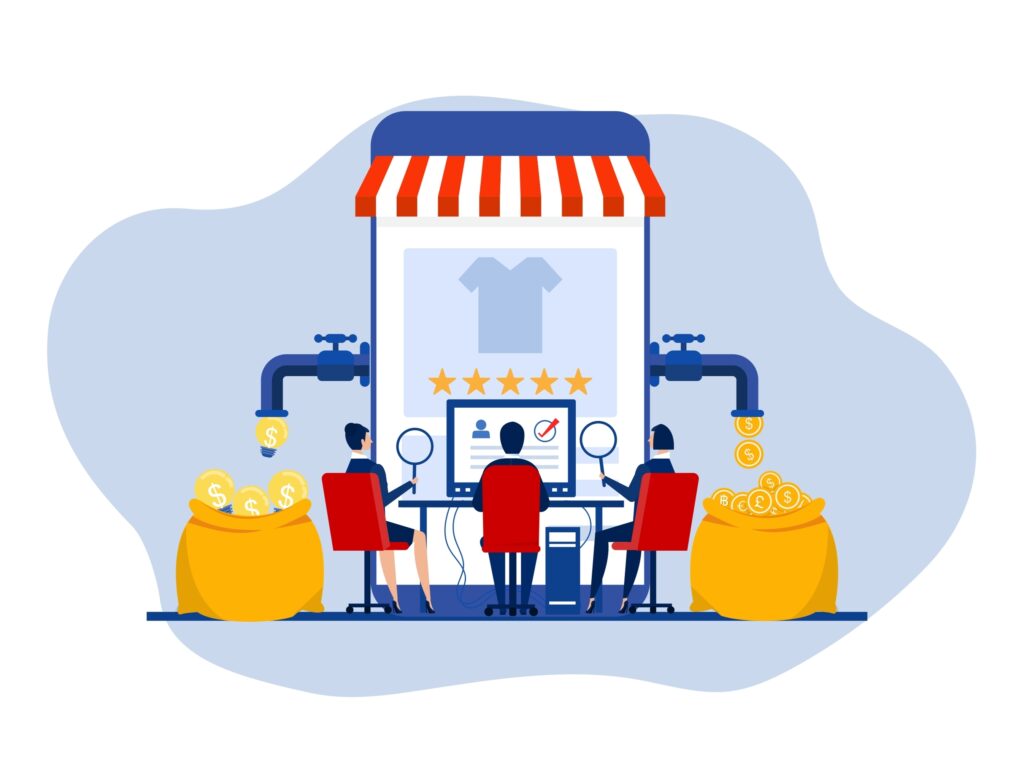
Existing bad products
Existing bad products can go hand in hand with customer pains, but with already existing products. Looking through some of the products whether it’s fashion or household you’re going to have some ideas on how to make it better or things you just wished it had.
Even without looking through your own products, you can check customer reviews online to gain the same information.
If you get stuck looking at what products to discover scrolling through Amazon can give you a good idea or even just look at your everyday items.
Having this newfound knowledge you can attempt to make a product better. You don’t have to reinvent the wheel but you can make it better.
For more information on choosing a product – check out our article “How to choose a product to sell“.
Evaluating your idea
Having an idea in mind is a good first start, but jumping into production isn’t the next step. You need to evaluate your idea or in other words, will it actually sell?
It allows you to get a good feeling about your product and you won’t waste money on something no one will buy.
Now, big companies spend 1000s of dollars on the validation process, but as a new business owner, it may not be possible. Here’s what you can do to validate your product.
81 percent of people conduct research online before purchasing an item.
What do people need?
When Henry Ford could have asked people what they want, they said they need a faster horse, not a motorized vehicle. But now, cars have become a crucial part of our world. Could you really imagine still riding horses to work? (wait, that sounds awesome)
But back to the question, Henry Ford still solved a problem, people needed to get to destinations faster, they needed to carry things, and they needed to move people. It becomes easier to realize the motorized vehicle was something everyone needed.
To further explain the question, what do people need, ask yourself the same question can I use this? If the answer becomes no, your validation process becomes easier.
Who is your audience?
If you can make the assumption that people will like your product, next is who will you sell to? Are they older, younger, married, or educated?
Skipping on the audience can seem like an okay thing to do, but it can really help understand your potential with the product and who exactly you can be selling to.
Researching online can be a good way to find out your audience. Many websites now give good statistical data about all sorts of topics-Statista.com is a great example.

What is your market?
Figuring out your market is an important step. It will help you identify the size of your market, the price people will pay, and your competitors.
Gaining all of this data furthers the validity of a product. It also lets you decide if your product is better than other competitors.
Have you made any sales?
Yes, we did say not to jump in and start creating products, but creating a few items of your product can be beneficial. Having a few products lets you test the market so to speak.
If you can see some interest in your product with a few sales, it will give you the confidence to move on to the next step.
Obtain your product
Reaching this step means you have found a product and validated your idea with real evidence that it will sell. Now, it’s time to obtain your product.
There are various methods of obtaining your product from creating it with a manufacturer or being completely hands-off.
Dropshipping
Drop shipping blew up a few years ago and is still a viable option for those wanting to start an ecommerce business. Dropshipping is completely hands-off in a sense, meaning you don’t have to store, create, or even ship products.
The model is buying inventory from a third party and having them fulfill all the orders.
For drop shipping, you can sell and market the products on your own website, but you don’t have to spend time managing the back end of a business. Dropshippers simply act as the middleman because they don’t own any products.
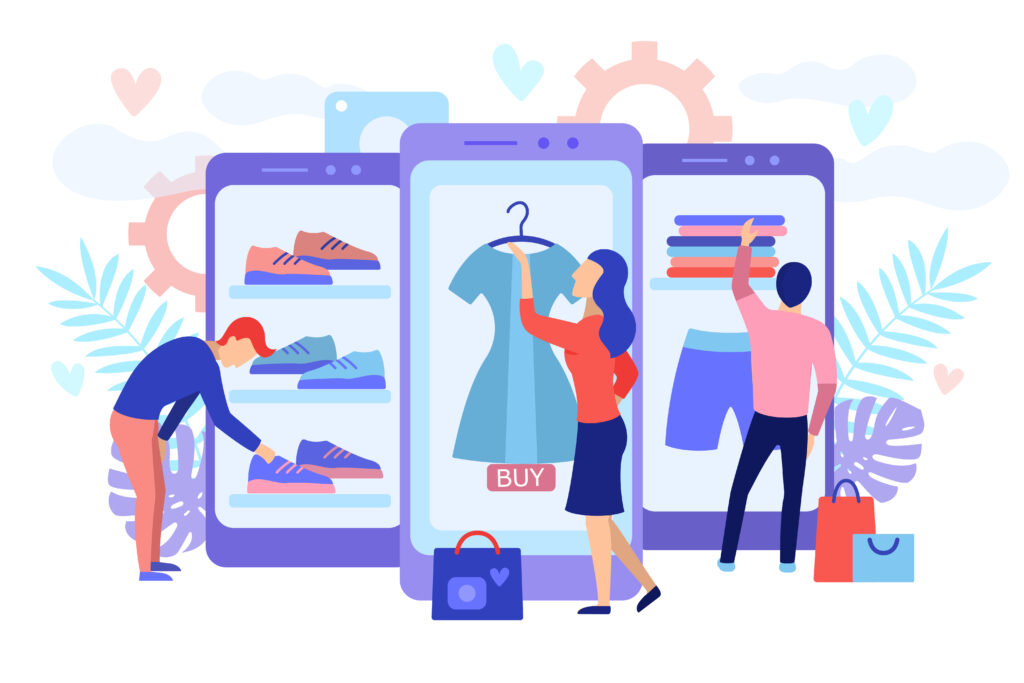
Manufacturer
Manufacturers are the more common option for those wanting to create a product. You can exactly create the product you envision. All the freedom does come with added costs and time, but creating the product you want, is a good benefit.
Finding a manufacturer can be challenging, but a quick google search can get you in contact with a manufacturer willing to help.
There are most likely manufacturers in your country, however, they can cost more than going overseas for products. Do your research and find the manufacturer you want to work with based on your needs.
Print on demand
Print-on-demand isn’t for every ecommerce business, but it’s a great way to create custom products. You can put your creativity into any item of your choice from clothes to household items.
Print on demand is when you work with a supplier that has the items and you only pay once an item has been sold. The supplier takes care of inventory and shipping.
Print-on-demand has been a popular choice over the years for those looking into different ecommerce businesses.
All of these ways to obtain a product can work. It depends on what you’re looking for and what you want to achieve, they all come with their own benefits. Ecommerce owners have also done a mix of both before.
Print-on-demand can be a quick way to bring a product to life, especially for proof of concept. The manufacturer does take longer, but then you’re creating the product you want.
1 out of 5 customers are willing to pay up to 20% more for personalized products.
Create a business plan
Do you have to write a business plan? It’s the first question that comes to mind when creating your own business or even thinking about it. The answer is yes. A business plan is a fantastic document.
It’s essentially a road map that brings your ideas and thoughts together. It’s also going to help you highlight your business’s values and benefits.
A business plan should include:
- Strategic planning
- Evaluating ideas
- Research
- Recruiting
- Partnerships
- Competition
Including all of the 6 ideas we mentioned is a great start to creating. The best way to get a business plan done is to start with the outline and just begin writing. It will take time to write and finalize the plan, but I give you a step-by-step plan on your next action steps for your business.
Set up your online store
Setting up an online store is an exciting step. It means you are one step closer to having your ecommerce business up and running. Your first step is going to be to use a website builder.
There are many options for website builders on the market. There are build-and-drop websites like Wix and Squarespace. Or there are web builders like WordPress that give you a little more flexibility.
The next step would be officially designing your store layout. Build and drops, give you 1000s of templates to choose from. It’s a matter of adding products, descriptions, photos, and other web content.
Creating your store is easier said than done. There’s a lot to consider. Here are some guides we found on the web to make the process a bit easier (some of them are from us)
- Writing better product descriptions
- Improve your web design
- How to take product photos
- Crafting website content that sells
If you get stuck or need help website builders do have a customer service phone number you can reach them at. There are also usually online forums for website builders that can help you out.
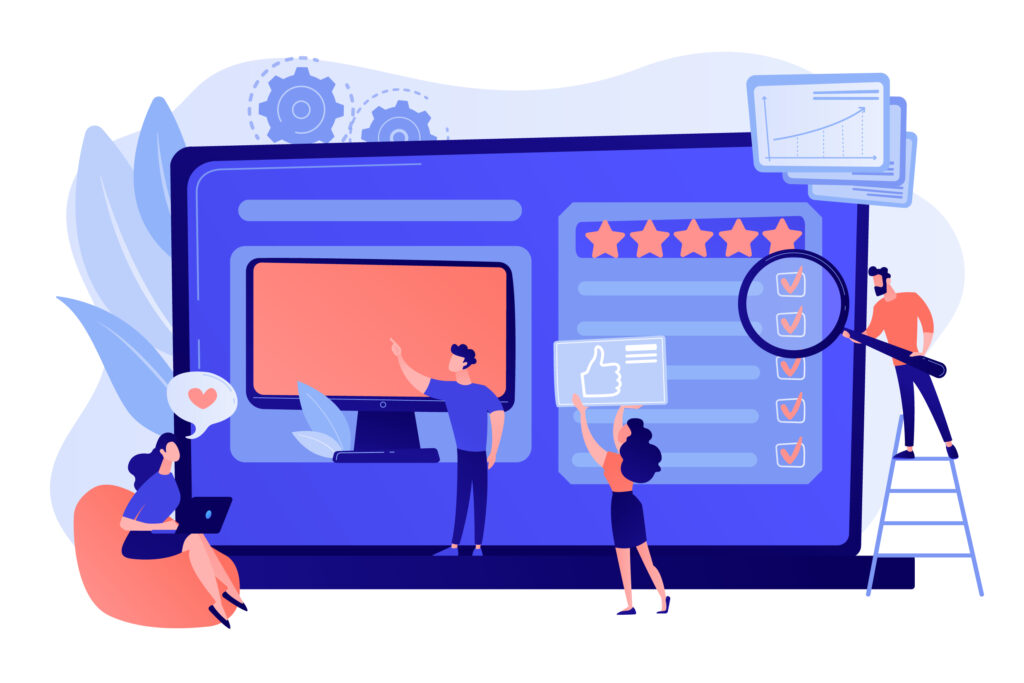
Storefront options
Aside from building your own website through a website builder, websites like Etsy, Shopify and Amazon have to be talked about.
These websites allow you to create a storefront on their website directly. You still have a lot of freedom on how your website will look. These websites spend their own money on marketing the platform, so it can potentially bring in sales.
Of course, these platforms do have their downsides, usually, they take a fee per transaction for them to be on your site. Although it’s not a deal breaker, it does have to be considered with your profit margins.
Regardless of the website builder or storefront you choose, it comes down to what you’re looking for. Choosing one isn’t easier than the other. There are countless stories of success on both.
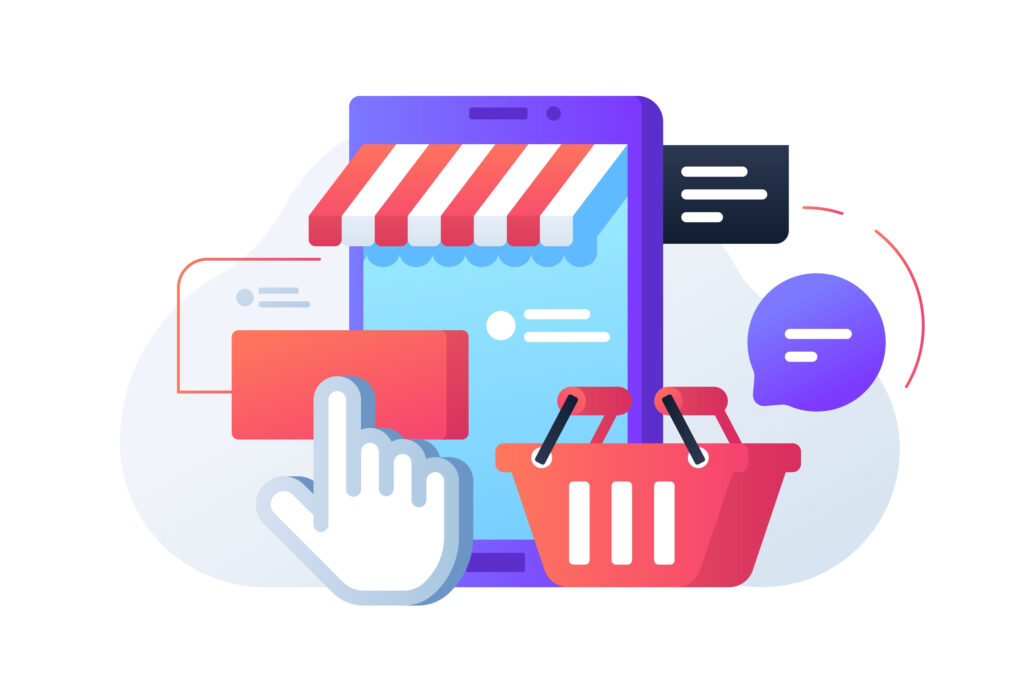
Determine shipping
Making sales is amazing, but how are you going to send the products to your customers? You need to prepare for the shipping aspects of a business. Deciding on the basics for shipping needs to be assessed before launch.
Choosing your options isn’t set in stone, businesses continually change and optimize their shipping strategy but you need to start somewhere.
49.3% of people shop online for free delivery.
Shipping rates and methods
There are many different shipping rates you can choose from.
Free shipping – two options to offer free shipping either the product price is increased to pay for shipping or you pay the full price out of your margins.
Real-time carrier rates – carriers like UPS and Canada Post offer live pricing for customers. Customers can choose the exact shipping method they want and pay accordingly.
Flat rate – works best with a similar product being shipped from your store. This way it’s fair for all customers no matter what product they choose. Sometimes you can profit from shipping and for others, you’ll take the cost. It works both ways.
Local delivery – for small businesses is a great way to offer reliable next-day shipping to customers. You can set up a shipping area and conveniently offer this option for customers.
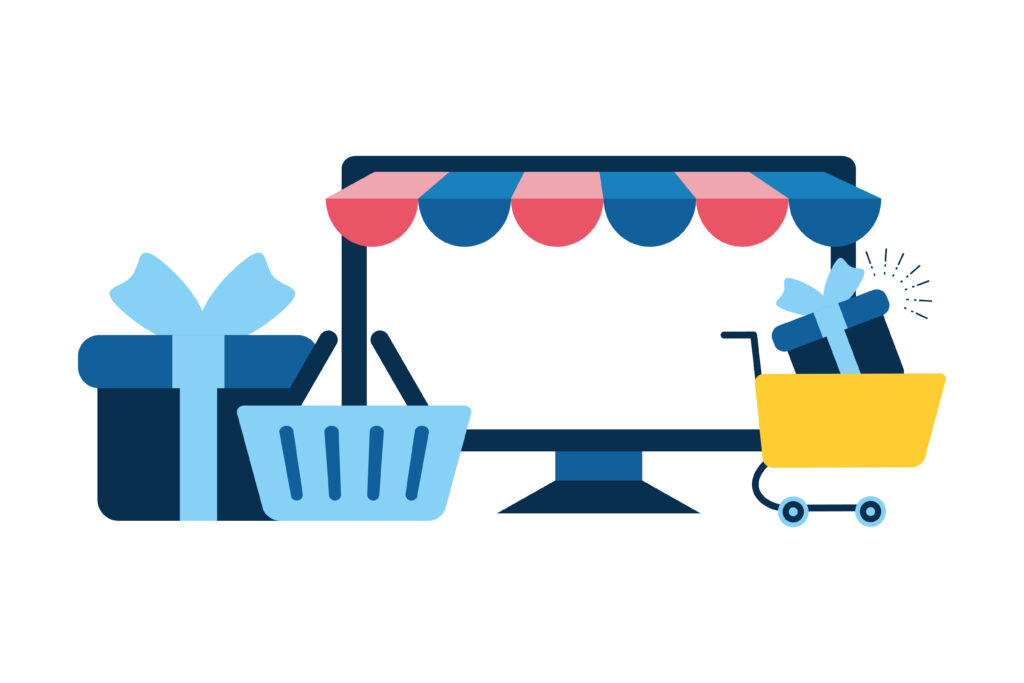
What about Shipping rates?
Shipping rates will vary and we don’t want to give off the wrong impression to those of you ready to start shipping.
However, shipping rates will depend on location, shipping address, weight, and size. A lot of carriers have a shipping calculator so you can check it out for yourself.
Consider all the information for shipping
Knowing all of this shipping information you can start to analyze the costs of shipping. Run different scenarios of the different rates, products, and delivery options so you can be aware of what you’re paying or what your customer is paying.
Packaging
Packaging is the next thing to consider for shipping. Packaging can play a big first impression of your brand to new customers.
Good packaging can really highlight a brand in the best of light. It can become more of an experience rather than just getting a product.
Years ago, packaging was not looked at by consumers, but now it falls within your business’s identity. Packaging has become unique and it’s a great way to build an audience.
Many different packaging options can potentially work for your product. Deciding on boxes, bags and other materials is going to be your first option. If you do have other products that are different sizes, you’ll need to figure out all the packaging options.
Keep in mind shipping prices vary greatly on size and weight. Have all your shipping options light and small if possible to avoid extra costs.
56% of shoppers aged 18-34 expect same-day delivery
Labeling
Once the shipping and packaging are considered it’s time to think about labels. Shipping labels are an important piece to your business. The old fashion way of writing a ship-to-return address on packaging can still work for bootstrapping ecommerce owners, although, it’s not accessible in the long run.
Getting a label maker is an additional cost, but you’ll be able to spend time on other things.
Drop off
After packaging the product, getting the right information, and labeling the order it’s time to ship it. At this stage, you can take them to the shipping center. Depending on your location it could be UPS, FedEx, Canada Post, etc…
Turn your store to live
It’s officially time to launch your ecommerce business. Now, it’s time to start acquiring customers. There are many different strategies that we’ll talk about.
SEO – is a great way to organically gain traffic through search engines. The better your SEO is the higher your website position will be and the more people will see it. SEO does take time to learn and implement.
Social media – a powerful marketing tool that can help gain traffic to your business. Whether it’s Facebook, Instagram, Snapchat or Tik Tok they all can play a role in marketing your business. The great thing about social media is it’s free to sign up and build an audience.
Paid Ads – Paying for ads could mean with google or social media. It is a great way to get your website in front of your direct audience. Paid ads can be costly, but they could also bring in a lot of attention.
Email Marketing – It has one of the highest conversion rates for all business owners. Developing a written email marketing campaign can be a valuable tool to increase sales. The hard part can be getting set up with emails and capturing leads with email.

Why is ecommerce becoming more popular?
Creating a physical store can be quite complicated and expensive. Depending on the business it can take $1000s to get up and running
However, over the years physical stores are becoming less popular, and more people are turning to ecommerce websites to have a business.
The cost of an ecommerce store is significantly lower than a physical store.
But something else is happening…
More people are starting to pursue their passions. The term side hustle is a mainstream thought now. People are creating side hustles based on their passions and working additionally apart from their full-time job.
What’s the reason for all this?
They can easily get set up an ecommerce business whether it’s based on products get started with a low barrier to entry. Ecommerce businesses have opened the doors financially for so many people.

There are countless stories of people generating $1000’s a month and turning their once side hustle ecommerce business into a full-time gig.
But of course, this isn’t the only reason for ecommerce businesses. There becomes a lot of freedom with ecommerce.
The ability to work online (depending on products or physical services), the amount of reach you can have, and again, the risk is lower.
Whether you have a side hustle you want to pursue or have always dreamed of becoming a business owner, starting an ecommerce business could be the right step for you.
Ecommerce businesses still need dedication and commitment to see success. It’s not a build-it-and-they-will-come approach. But for those willing to see it through it can be a great option.
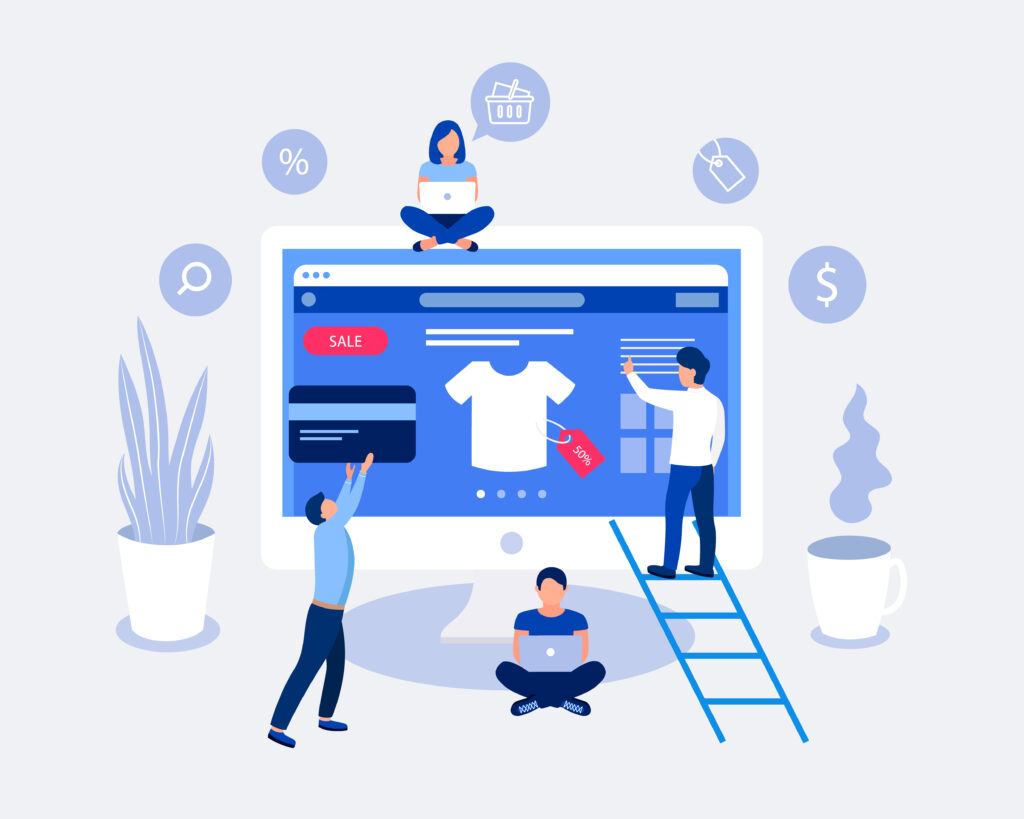
The cost associated with an ecommerce business
Cost is going to play an important role in any ecommerce business. It’s vital to understand all the costs of going into starting. Generally, you could spend only a couple hundred a month or upwards of thousands of dollars a month.
The initial fees associated with ecommerce:
- Domain name
- Website Hosting
- SSL certificate
- Web design
- Payment processing
- Software
Domain name registration – The average cost of a domain name varies from $10-$20 a year.
The price depends on where your purchase the domain name. Also, .ca, .com, and .io are all the different costs associated with them.
Website hosting – The average cost of hosting a website can range from $5-$25 a month. Each website host can offer several features that help but are additional costs.
SSL Certificate – The average cost of an SSL Certificate will vary greatly from $30-$1000 annually. Keeping your site secure is going to be a must.
Your SSL certificate will protect yourself and your users from potential hackers. It’s also a key ranking factor with Google
Web design – The cost of web design can vary you can even do this part yourself.
However, a good website designer is worth their weight in gold. It can be anywhere between $1000 to $10,000, with even some designers charging even higher.
Payment processing – Payments can be made through PayPal or e-transfer, but this makes it harder for costumes to purchase.
Signing up for Stripe, Square or another payment processing is a must. Most tenders charge a 2% transaction fee along with a low 20-60 cent base fee.
Software – Ecommerce websites need software that can run them. This could be Shopify, or Big commerce, just to name a few. These softwares can run from 75$ and up each month.
*A lot of the costs we listed here, can be purchased as bundles. For instance, domain names, websites, hosting, and SSL certificates you can usually find as one-time payments made annually.*
Other costs to consider:
can be up to your choosing, but altogether they can help your ecommerce business.
Accounting software – Keeping up-to-date financial records is going to be key come tax time. Signing up with QuickBooks or Freshbooks is going to be a good start.
Marketing budgeting – Spending money on marketing is essential to getting your name out there and bringing in new traffic.
Bigger companies usually have ongoing marketing budgets, but when you’re just getting started you can pick and choose when it’s best to spend on marketing.
Inventory costs – For those physical product-based businesses inventory costs need to be looked at. You’ll need the right amount of cash flow to continually have inventory.
Our goal isn’t to discourage you from starting an ecommerce business. These costs just need to be considered when deciding on an ecommerce business.
The amount of money needed can vary greatly. Some ecommerce business owners can operate with just $1000. It’s all about what you to willing to spend money on.
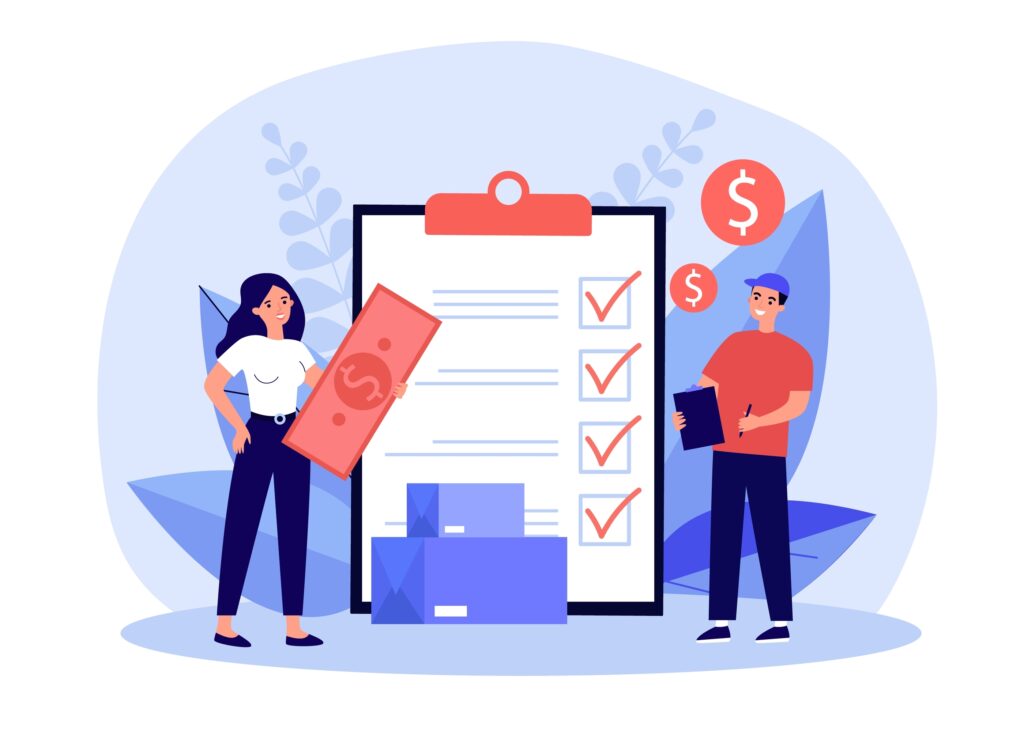
How to succeed in ecommerce?
Once you’ve set up your business and have seen a steady stream of income it’s important to understand how to maintain and scale your business.
There are many different ways and ideas to optimize your business to improve costs, increase revenue, or simply just spend less time on tasks. All of these can help you continually succeed.
Have control over your operations
Understanding all of your business data from inventory, revenue, shipping, customers, and anything else that factors into your business is an important part of having a successful business.
Our software Breadstack does exactly that – it gives you a full overview of your business with precision data and more.
Benefits of Breadstacks operations feature
Make better decisions with a full business overview – Check product lists, inventory items, and customer service chats all on one system. Be aware of all business data.
Avoid or reduce errors before they happen – Have real-time data in every department to reduce errors and keep all systems running.
Save time by being able to operate anywhere – Move freely in your business by being aware of all departments in one place.
Managing stores, inventory, products, and customers isn’t easy. Gain an overview of all operations to understand your business.
81% of shoppers conduct online research online before making a purchase.
Find a way to improve revenue
Sales are important to any ecommerce business – it’s the only way to keep the business running.
One method of sales may be working now, but that doesn’t mean it always will. Always be challenging your sales team whether that’s only you or your team.
Breadstack will help you revolutionize your ecommerce business to empower the modern customer ultimately increasing sales.
Benefits of Breadstacks sales feature
Give promotions to liquidate dead stock – Make money immediately by turning dead stock into cash and liquidating slow-moving inventory with effective promotional activities.
Never have an out-of-stock item for purchase – Always be up to date on stock availability and have a full view of your inventory in real time. Know where your products are always going.
Always be ready to sell – Manage and create promotions in real-time during customer shopping to upsell or build the basket.
Customers want deals, and retailers need sales. Take advantage of powerful insights to make data-driven decisions that deliver customer value and exceed overall business goals.
Utilize marketing for efficiency
Marketing is an expense, but the return on investment can be quite big with the right marketing campaign. The best tip we can give with marketing is to always be testing.
Running one campaign isn’t a good way to run your marketing efforts. Spend the time testing and gathering all the data you can to have better campaigns.
Breadstack enables businesses to establish real customer data for tailored experiences.
Benefits of Breadstacks marketing feature
Personalize campaigns for better results – Collect customer data that allows you to know them better. Gain real insights that matter.
Offer targeted promotions that work – Check buying or browsing history to offer targeted promotions or individual coupons.
Encourage customers to buy more – Get to know your customer and engage them with relevant product information or promotional material.
Automatically collect customer data that can be used for a better customer journey. Target customers with personalized recommendations or promotions.
Improve customer service
Customer service can be underutilized or even overlooked, but it’s a fundamental part of any business’s success.
Customer service can result in more sales, better retention, and overall satisfaction for customers.
At Breadstack we believe in the powerful impact customer service has on a business. Our software lets you unlock real-time customer data.

Benefits of Breadstacks customer service feature
Connect with customers when it matters most – Connect with customers in real-time during their shopping experience to alleviate barriers.
Offer help when you’re customers need it – Set up a chat widget to interact with customers and offer support or product information
Create better customer journeys with confidence – Automatically collect customer data such as buying history, behaviours, and shopping patterns to offer personalized experiences.
Take advantage of key data points during customer interactions to stimulate purchase decisions and accelerate the buying process.
Ready to start an ecommerce business?
Anything new is scary at first. There are a lot of unknowns, concerns, and fears about starting an ecommerce business.
It’s the reason we created this article. We want to give those interested the right information to get started.
Starting any ecommerce business can be difficult but with the right idea, motivation, and commitment anyone can make it work. We believe in each person that has a dream to start an ecommerce business.
We want to see everyone succeed, which is why we created our own software to help those optimize their business and increase revenue.
Breadstack lets you….
Personalize campaigns for better results – Collect customer data that allows you to know them better. Gain real insights that matter.
Offer targeted promotions that work – Check buying or browsing history to offer targeted promotions or individual coupons.
Encourage customers to buy more – Get to know your customer and engage them with relevant product information or promotional material.
